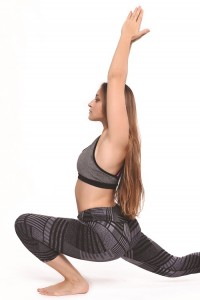 We all know we should stay active, but how much is enough and what level of activity is appropriate? The guidelines differ slightly depending on your age, but everyone is advised to do some physical activity every day. This should include aerobic and strengthening exercises (see below).
We all know we should stay active, but how much is enough and what level of activity is appropriate? The guidelines differ slightly depending on your age, but everyone is advised to do some physical activity every day. This should include aerobic and strengthening exercises (see below).
Adults between the age of 19 – 65:
If you are in this age group it is recommended to aim for the following:
At least 150 minutes of moderate aerobic activity (i.e. cycling, brisk walking or pushing a lawn mower) every week, or 75 minutes of vigorous aerobic activity (i.e. running, a game of singles tennis or using a skipping rope) and strength exercises on two or more days a week that work all the major muscles (arms, legs, back, abdomen and chest).
What types of activity should I do?
A mixture of moderate and vigorous intensity aerobic exercises is also acceptable and a good rule to remember is that one minute of vigorous activity provides the same health benefits as two minutes of moderate activity.
Moderate vs Vigorous exercises: With moderate activity, you should still be able to continue a conversation without pausing for breath where as with vigorous activity, this will not be possible.
Even a little is better than none
Different types of exercise and what they do
 Aerobic/cardiovascular exercises: exercise that stimulates the heart and lungs to improve their function. This type of exercise helps to improve overall stamina so that you no longer get out of breath and tire so easily.
Aerobic/cardiovascular exercises: exercise that stimulates the heart and lungs to improve their function. This type of exercise helps to improve overall stamina so that you no longer get out of breath and tire so easily.
e.g. cycling, vigorous housework or mowing the lawn
Strengthening/resistance training: this is where you are using the muscles against resistance such as lifting weights, or using resistance bands or even activities that involve you resisting your own body’s weight such as sit-ups or press-ups.
e.g. lifting weights, resistance bands or body weight exercises
Stretching/flexibility: help loosen stiff muscles, joints, and scar tissue, helping you to become more flexible. Stretches also help reduce tension and help you relax, especially if they are incorporated with deep breathing and relaxation work.
e.g. Yoga or Pilates
Balance: this can help with the control of movement and ensure that muscles are ready to support the body when needed. This is especially beneficial for those over the age of 65, if there is a risk of falling.
e.g. dancing, tai chi or yoga.